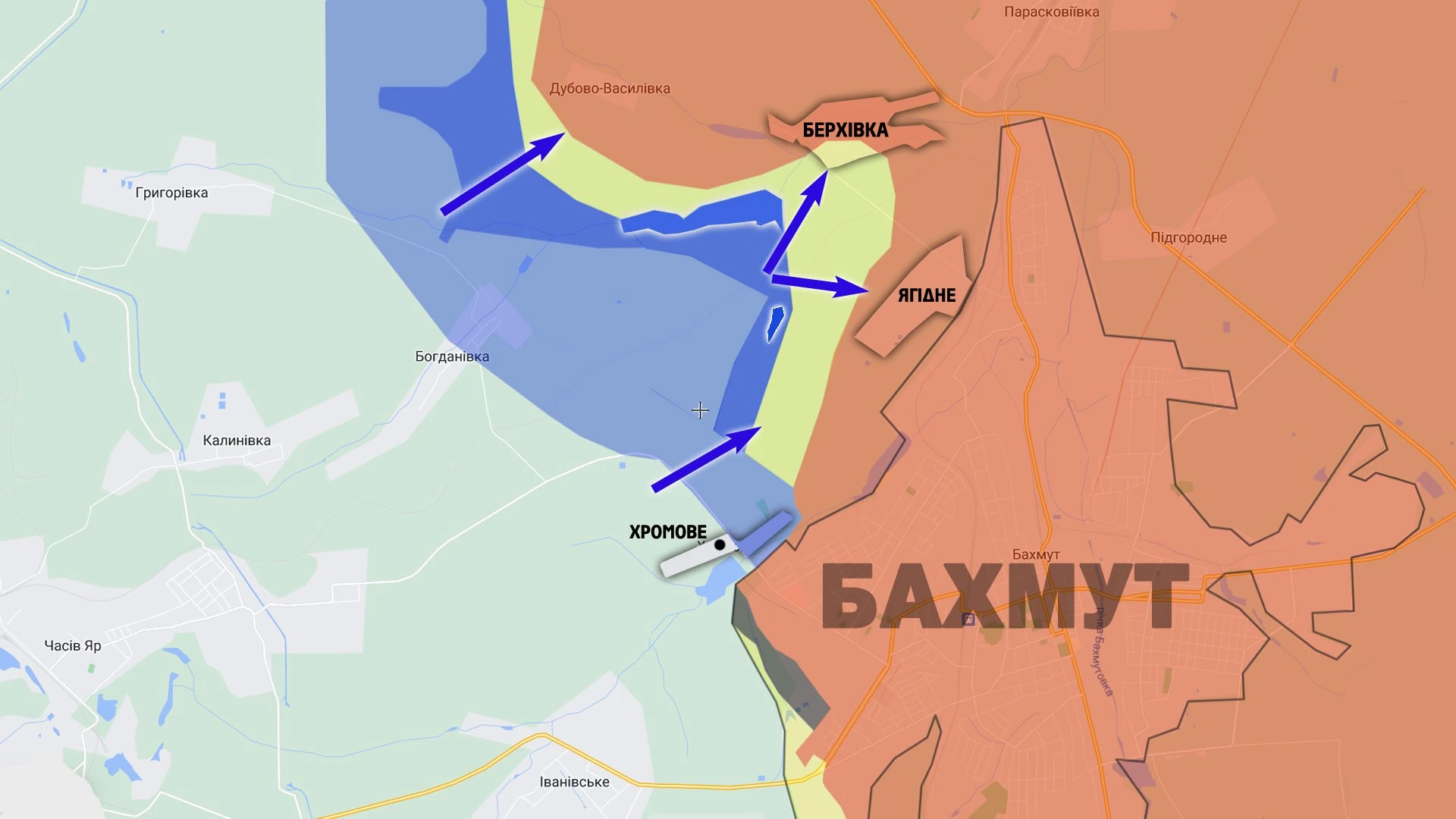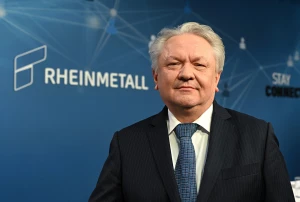
Lukashenko and Prigozhin are both arrogants, but they will not get along in Belarus — military expert Serhiy Zgurets
Lukashenko believes that the Wagner fighters can protect his power, but he doesn't fully trust the Wagner PMC. Nonetheless, Lukashenko and Prigozhin won't be able to cooperate in Belarus
Situation at the front
The Armed Forces of Ukraine are engaged in both defensive and offensive operations. Our troops are deterring the enemy in the Lyman, Avdiivka, and Marinka directions, while also launching attacks in the Melitopol, Berdyansk, and Bakhmut directions. On June 26, it was announced that the Ukrainian Armed Forces regained control of the village of Rivnopil in the Donetsk region. On June 27, the General Staff reported successful advances on the Novodarivka - Priyutne and Novodanylivka - Robotyne lines. When discussing the situation in the South, our Defense Forces are inflicting losses on the Russian Federation using artillery, but progress is challenging with each meter gained.
The situation in the Bakhmut sector
In all sectors, including Bakhmut, our units have been advancing on the flanks for the past four days. However, we have not yet entered the city because the enemy still controls those areas due to the geographical features of the region. The commander of the Ukrainian Armed Forces unit, Denys Yaroslavskyi, mentioned that in the past week, our forces have liberated over 1 km of territory to the north of Bakhmut. We are also coordinating with our counterparts covering the southern part of the city, and they have achieved some success as well. We now have almost full control over the territory near Berkhivka from the north.

Berkhivka is strategically important as it can help us regain control over Bakhmut. North of Bakhmut, there is Yahidne, which was lost by our Defense Forces after heavy fighting in January. Currently, all positions are aligned to recapture it in the near future. The enemy understands this and is retreating. We are conducting continuous mortar, artillery, and aerial reconnaissance operations. The Armed Forces are coordinating their efforts to clear and regain the territory.

Russia has had enough time to put mines everywhere. They can lay up to 15-200 anti-tank or anti-personnel mines per day with a small platoon. By using machinery, they can significantly increase their mining efficiency. Even the Russians do not possess mine maps, and they mine everything indiscriminately, making it challenging for us to advance. Dealing with mines requires specialized demining vehicles, but the enemy constantly monitors the entire front area from the sky, ready to attack if any vehicles appear. Currently, our artillery is clearing the fields as much as possible, suppressing the Russians, after which the Ukraine’s Armed Forces take positions, fortify them, and continue to advance.
Aviation is crucial at the moment because it can bombard targets and clear mines. Without aviation, our capabilities are severely limited. The enemy's aviation is constantly active. The Russian Federation has made significant progress in the use of various types of observation drones and kamikaze drones. We need to revise our doctrine and adapt to their tactics, especially in terms of countering these drones. However, in Ukraine, the procurement of drones is not a priority. A month ago, a US company called Switchblade agreed to fund a program, but providing the drones to the Armed Forces free of charge is challenging. Four licensed Ukrainian companies are either unable or unwilling to accept donations. If we do not make changes, the Russian Federation will surpass us in the use of drones. The Russians have advanced electronic warfare capabilities, and we face a difficult situation. We need to focus on trench radio-electronic warfare systems and drones. Each platoon in the Ground Forces should have an anti-radio-electronic warfare platoon and an anti-drone platoon.
However, Denys Yaroslavskyi noted that there is a shortage of anti-drone guns, which are expensive and currently purchased with volunteer funds. His reconnaissance-assault company operates in unexplored areas and conducts enemy sweeps, making aerial reconnaissance essential. Currently, we use Mavic drones, but we require higher-class UAVs such as Jump 20 and Puma, which are anti-radio-electronic warfare and of superior quality.
If the government does not address corruption within the arms industry, the Armed Forces will continue to receive insufficient or no drones at all. The Ministry of Defense should communicate directly with small units to understand and address their needs accordingly, rather than allowing intermediaries to steal funds — approximately UAH 9 billion has been embezzled. If this hadn’t been the issue, the Armed Forces would have received all the necessary equipment. We require weapons to counter drones, monitoring equipment, and many drones that can be used for attacks.
In Israel, they lose drones instead of human lives. It is more advantageous to lose a thousand drones and successfully target the same number of objectives rather than losing a single fighter. FPV drones are accessible, but there is a shortage of them. Drones are considered expendable items. If we do not utilize them, we cannot practice and improve, so their availability should be unlimited.
The situation in Belarus
Most of the Wagner fighters were defeated near Bakhmut. Prigozhin in Belarus, where the army was made ready, announced plans for camps for the Wagner forces.
Belarusian public figure Sergey Bulba surprised many by revealing that Lukashenko and Prigozhin have known each other for 20 years. The Belarusian leader has his own agenda because he knows he lacks legitimacy and is worried. Belarus is also seen as a co-aggressor country. Lukashenko is concerned about potential action from Ukraine, Poland, or the West against Belarus. He sees nuclear weapons as a safeguard and a way to prevent attacks. Lukashenko believes that having Wagner guarantees his power's protection.
However, he is wary of Wagner PMC due to mistrust. Both Lukashenko and Prigozhin are autocrats who would not work well together in Belarus. Lukashenko claims that camps can be organized if requested, but currently, there are none. His main assurance lies in nuclear weapons.
Wagner's presence causes more problems than benefits. Belarus has an army estimated at 65,000 personnel, but they lack experience, whereas Wagner, with branches worldwide, has around 100,000. However, Lukashenko understands that he cannot trust Prigozhin, as they share similar traits. They will likely collaborate on joint projects in Africa. Lukashenko stashed stolen money in the UAE, but four months ago, the Emirates demanded its return due to it being labeled as stolen by the USA. Lukashenko is now seeking places to spend that money. Civilized countries would not engage in such behavior, hence his interest in Africa. There are reports of Lukashenko briefly visiting Turkey with his family, but it is unclear if they have returned, while the dictator remains in Belarus. He was unsure of what actions to take and what lies ahead.
Troops were sent back to the barracks, but nothing significant occurred. There were rumors that nuclear weapons were brought to the Shishkovichi base, but attempts to verify this were unsuccessful. Special services set up a camera trap in the forest, but it resulted in cars with people in plain clothes stationed along the entire route, prohibiting anyone from leaving their vehicles near the base.
- News











































